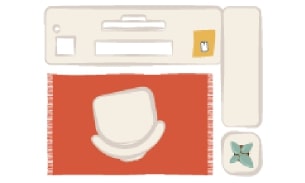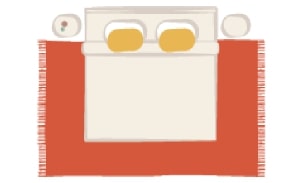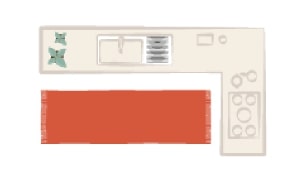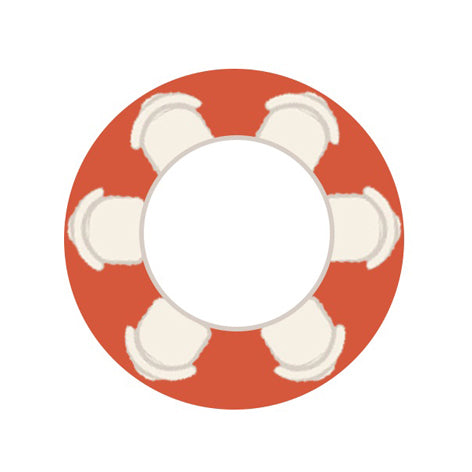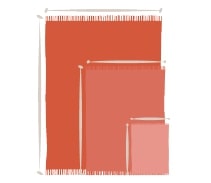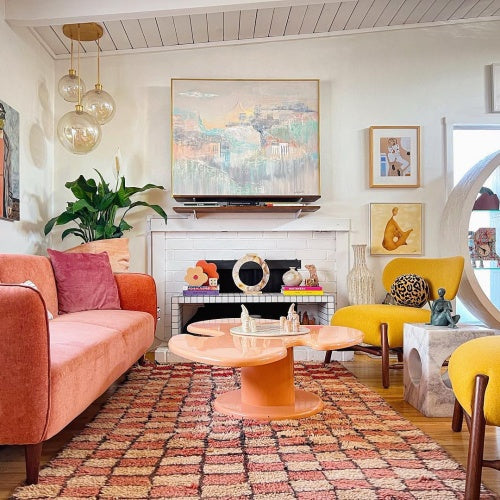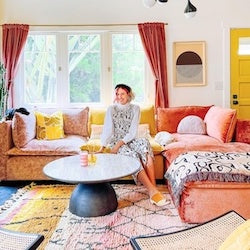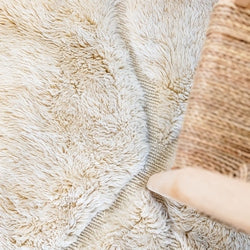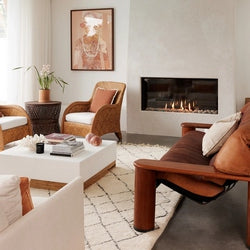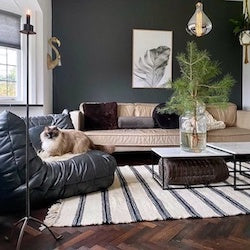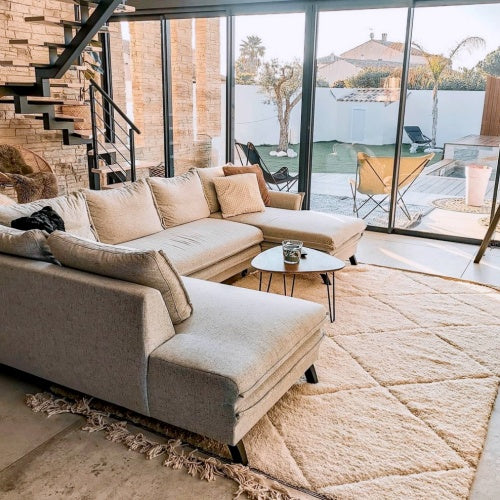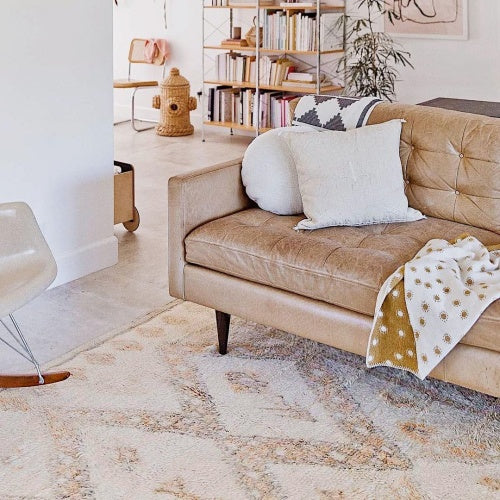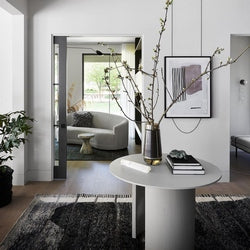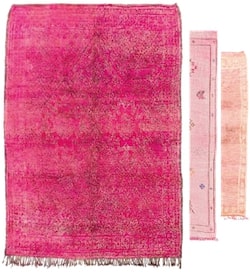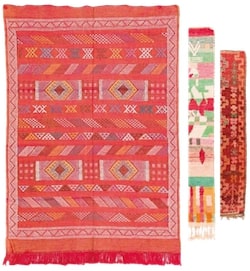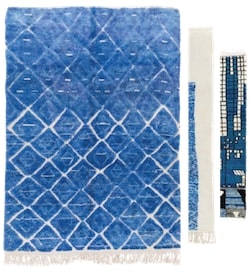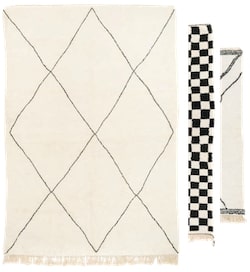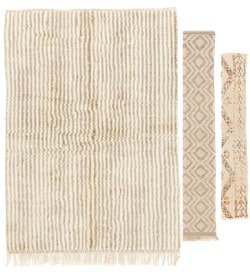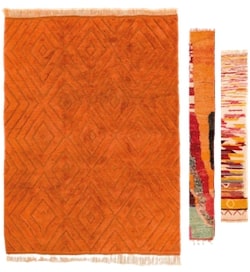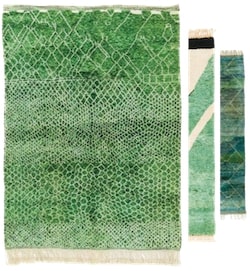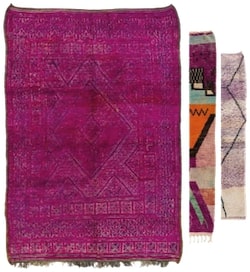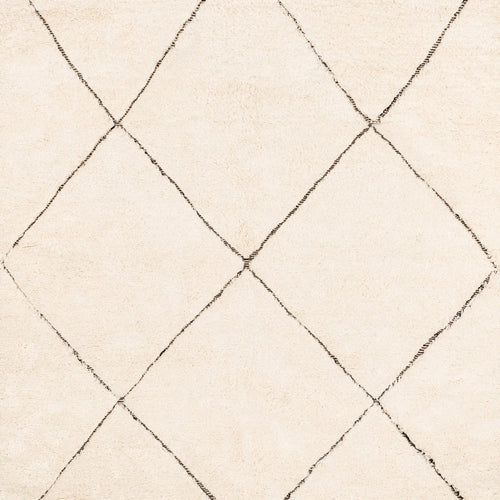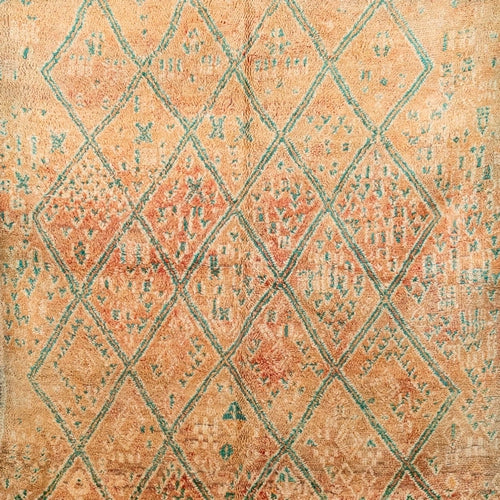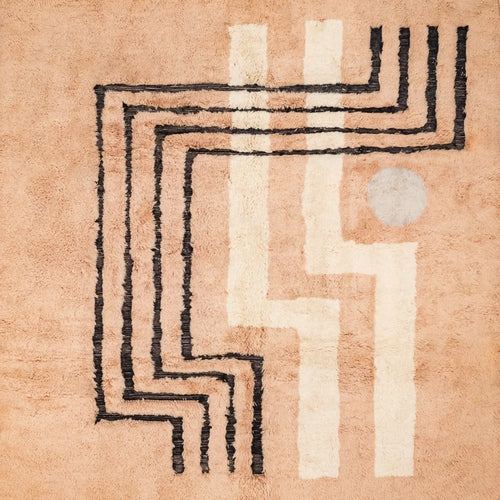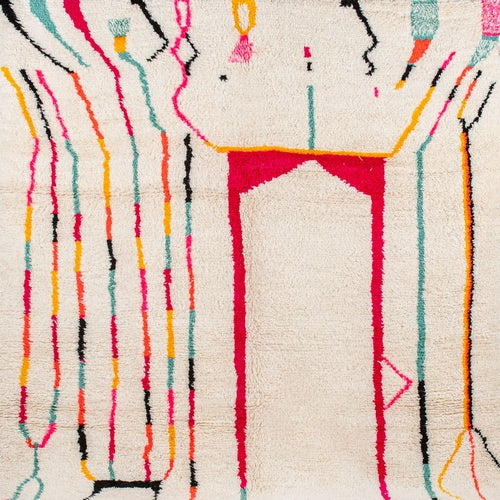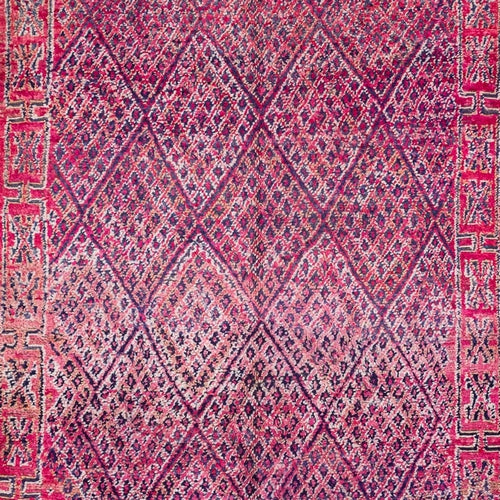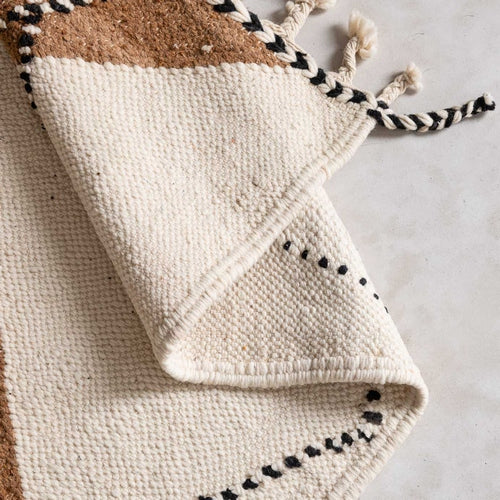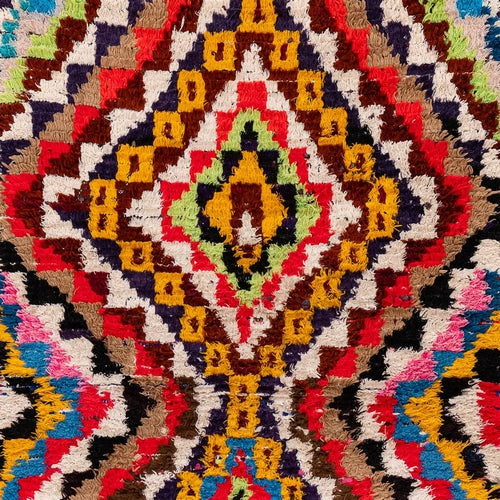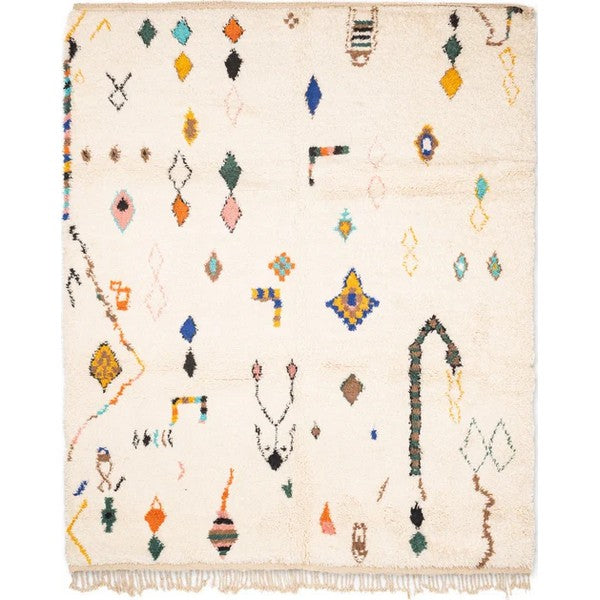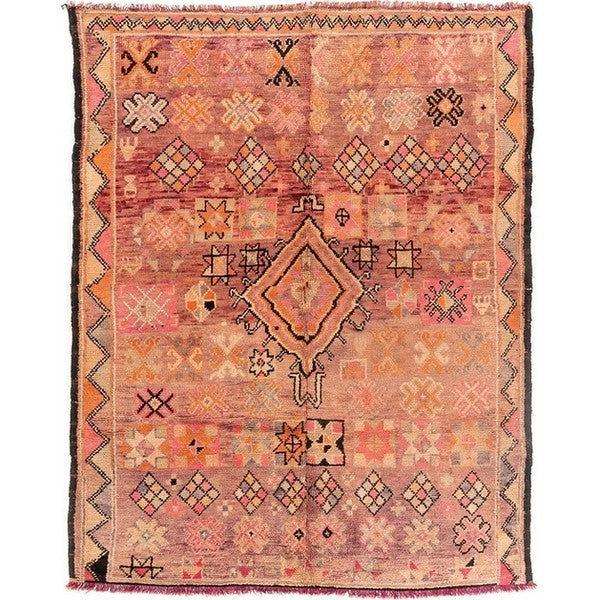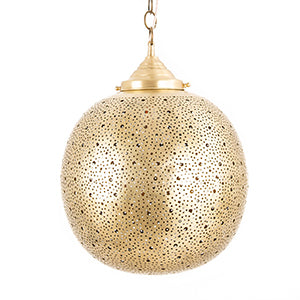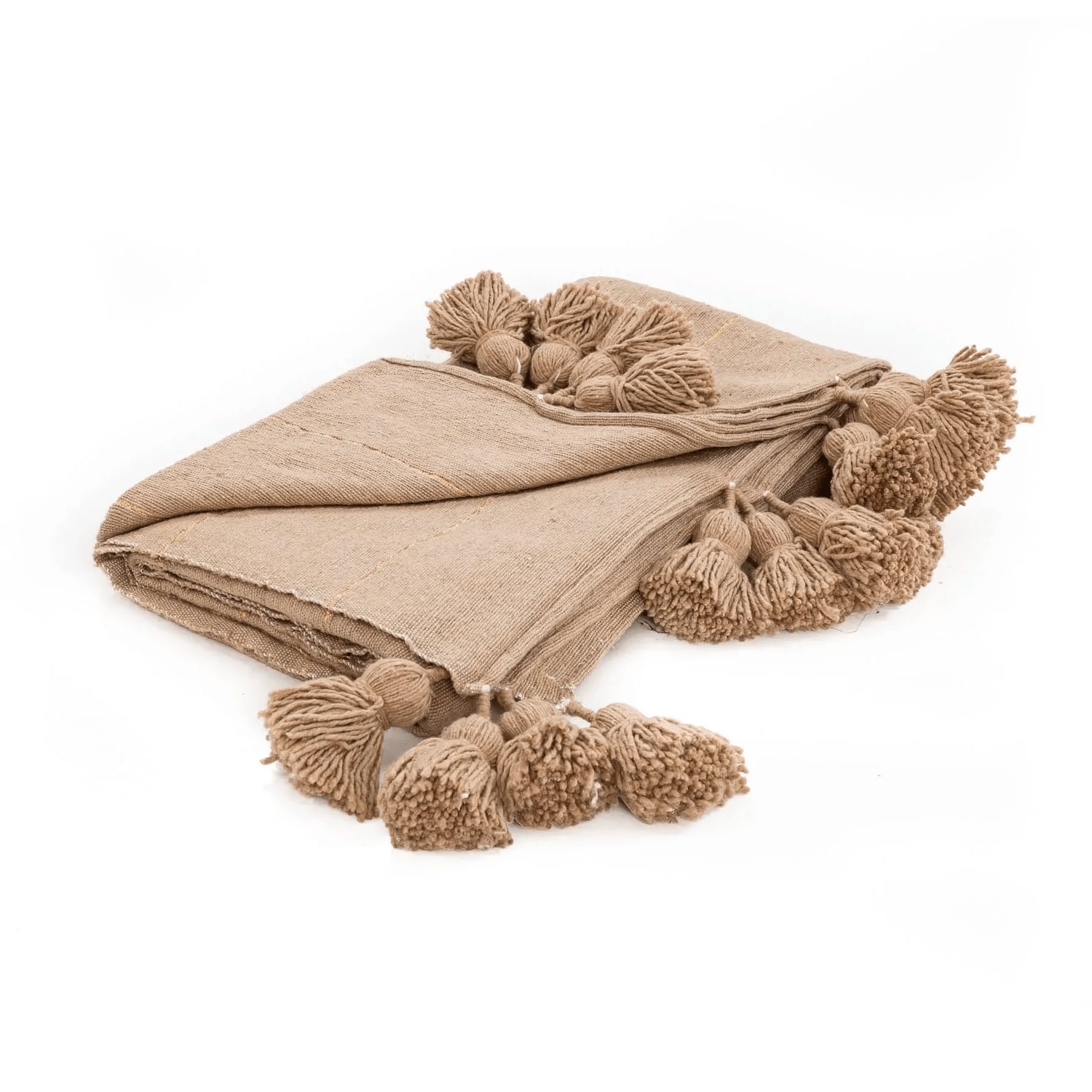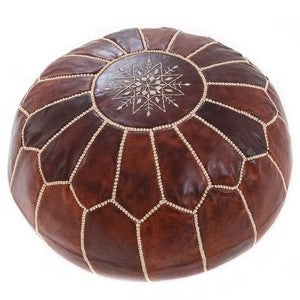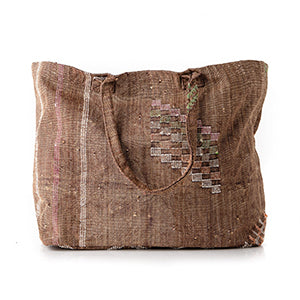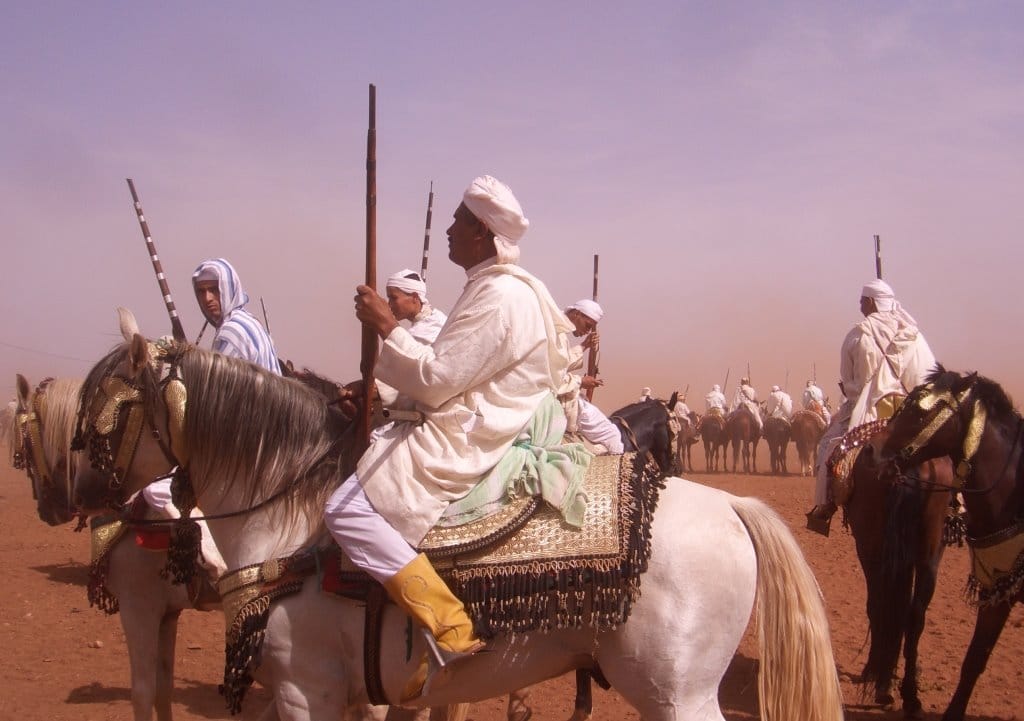The small market town of Boujad in Khouribga Province is the gateway on the Low Rug Road to the Middle Atlas Mountains, on the route to Mrirt from Marrakesh to the Mediterranean. The High Rug Road climbs the Higher Atlas Mountain towards Azilal and is a harder path to tread, so the Lower Rug Road through Boujad proved more popular among the Caravan trains of the old times.
The passing Caravan Drivers were often nomadic Saharan Berber. Their rugs were a Kilim Flatweave Design (Kilim itself is a word of Turkish origin – testament to the reach of the Saharan Berber Caravan Trains), made of the materials available in the Sahara, particularly camel wool. Camel wool is finer than most merino (sheep wool) which can make it feel as soft as Cashmere, while being thermo-regulated to allow a breathable material that is hot in cold climates but cold in warm climates. However, Camels hair is often gathered when it sheds its coat, and because of this true Saharan rugs were, and remain extremely rare.
This contrasted with the Boujad rugs which were made with fine, soft wool, more suitable for floor coverings. The passing merchants would trade their wares for rugs so that they could bring more comfort to their journeys, as Camel rugs were expensive and rare. They would take these rugs with them, and in time they found a thriving market for them elsewhere, and so the reputation for these rugs were established long, long ago. When the Merchants sold these rugs on, they were called Boujad rugs, in reference to where they came from – the town of Boujad.
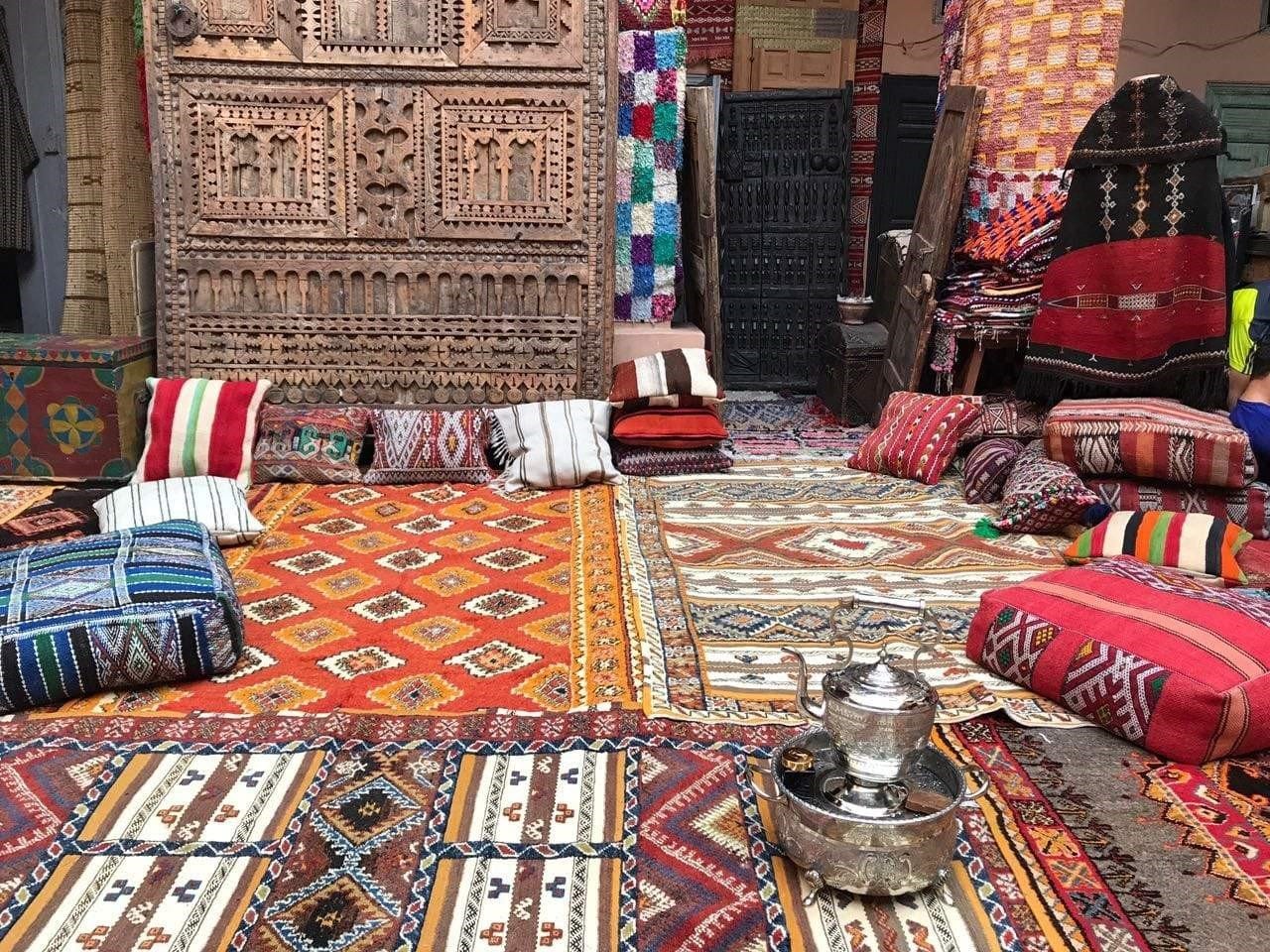
Overtime the Berbers of the Rug Road and the Saharan Berbers exchanged their cultures and beliefs, and this merged into a common identity of shared symbols and values. The caravan drivers were expert astronomers who read the night sky to navigate through the harsh, indiscernible desert on their way to Boujad and beyond. They passed their knowledge and folklore to the Berbers of the Middle Atlas, and over time the shapes which they had seen in the sky became associated with traits from the stories they had heard, and that led to the use of geometric patterns to communicate sentiments.

Over time, it became practice that the Berber tribes surrounding Boujad would travel to Boujad to sell their rugs in exchange for the manufactured goods of the towns and cities. This in turn propagated the market and festival calendars, which today is prominently seen through weekly rug markets and the annual Moussem festival which draws Berbers from surrounding areas together. The Moussem festival, while being dedicated to a local saint, is a cultural connection with the past, remembering the trade that happened when the caravans came through a large craft fair, and a competitive display of the most valuable possession of the time – the mount (camel or horse).

Variations of the tribal rugs of the owners are displayed with great pride on the participants horses, both as a riding rug in lieu of a saddle and also as decorative adornments. However, due to the decline of the caravan trains, the Saharan Berber has become less represented and the festival has become a predominately horse festival.
Boujad rugs are traditional tribal rugs which serve both a practical and symbolic purpose. The woollen rug provides protection from the cold nights while the red based colours are associated with exorcising evil spirits to provide spiritual protection. The geometric patterns on the rugs have particular meanings and sentiments, which have developed over time immemorial, and are usually wishing for good health, fortitude and fertility. When adorned to a horse, the rug protects the rider, and likewise, when a Berber sleeps under their rug, they are also sleeping with the love of their families, guarding them from evil spirits.
Berber culture has a deep connection with their rugs, and they often age gracefully with their owner before being passed on. Newly woven Boujad rugs have strong, eye-catchingly vibrant colours which soften into lovely washed pastel tones as the rug ages, reflecting how aging mellows energy into wisdom through experience.
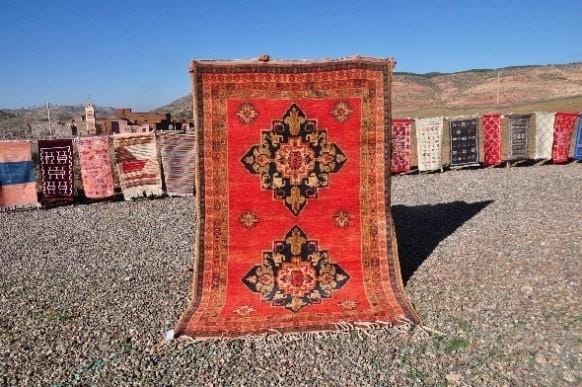
To this day, the trade of Boujad rugs for wares continues. Benisouk is one of the few merchants who travels the Rug Road and stops in Boujad to trade essential items like cooking equipment in exchange for rugs, and in reverence to the traditions of the Caravan Trains, we continue to contribute to our culture by investing in the rug making tribes. If you want to invest in a Boujad rug or another Contemporary Moroccan Rug and bring a bit of this old world culture into your home, then Benisouk is a great place to look.
